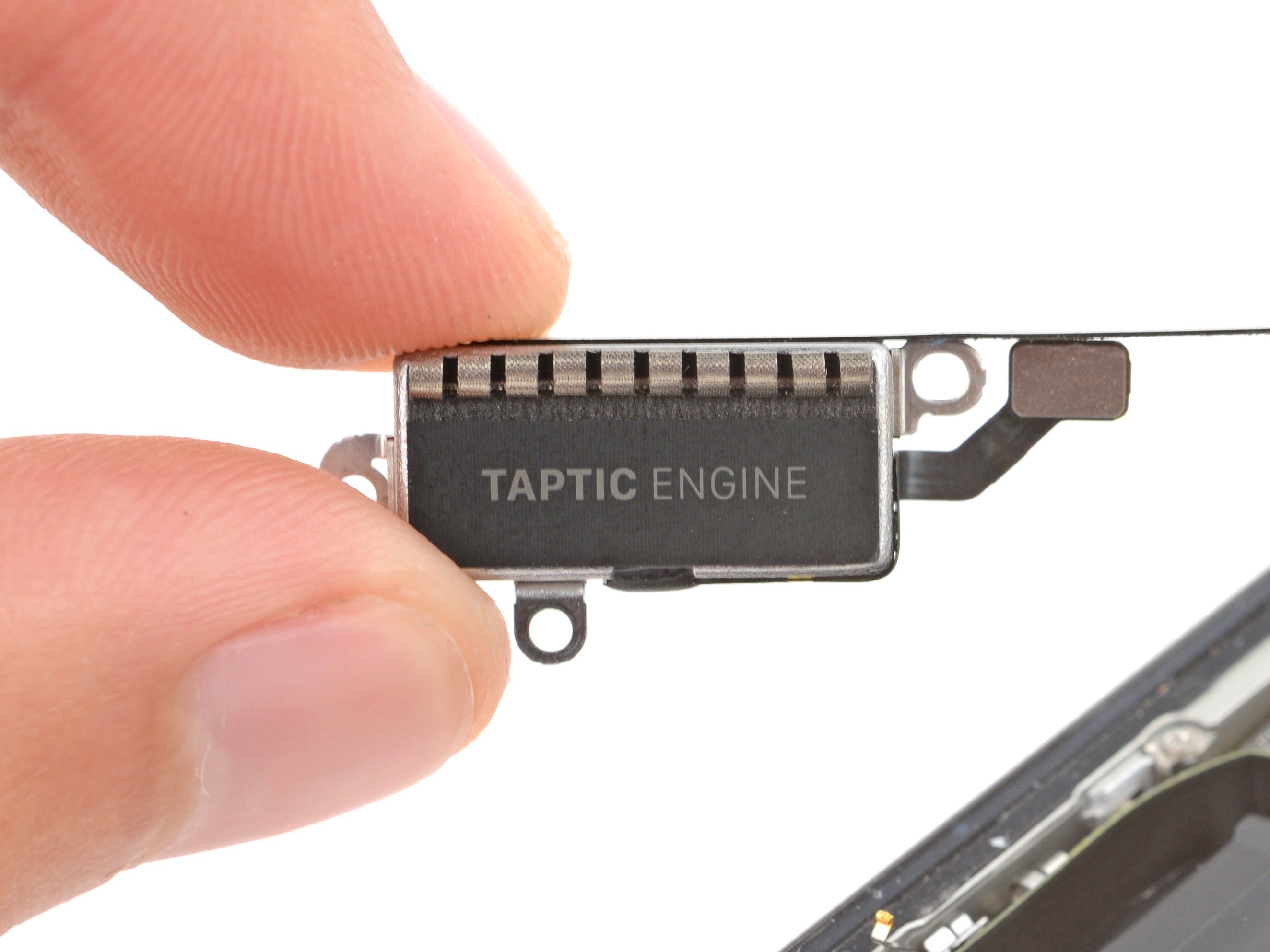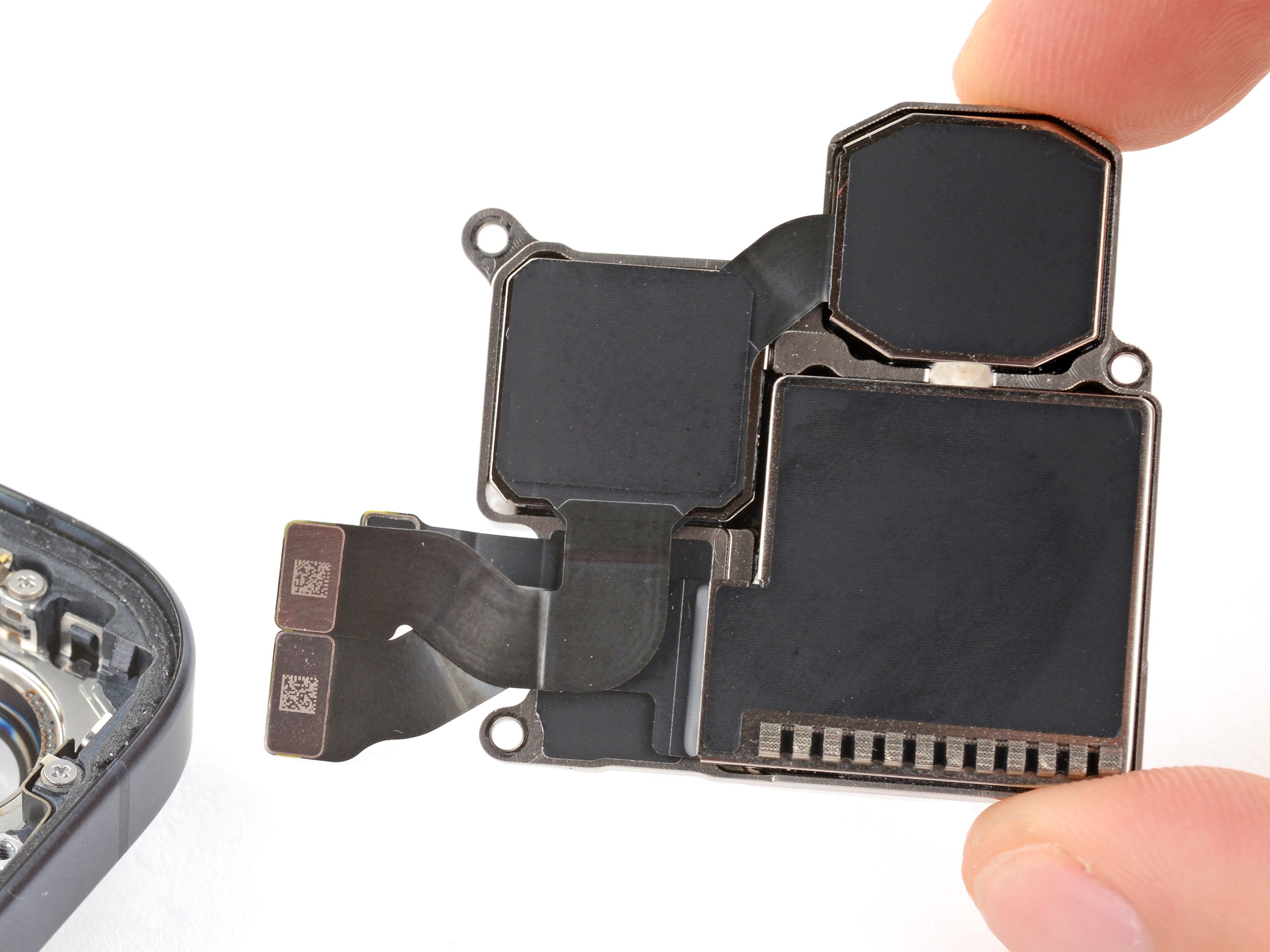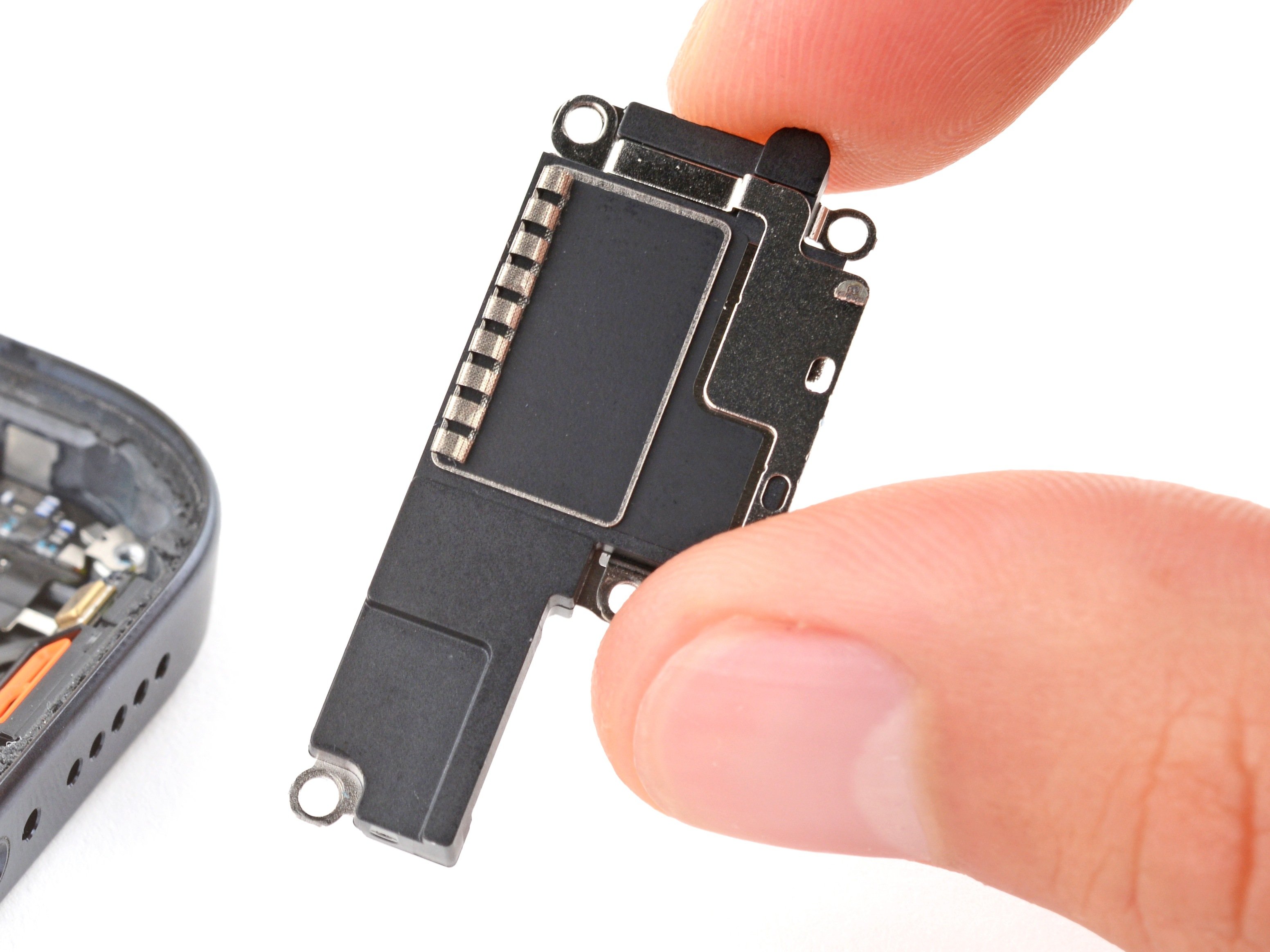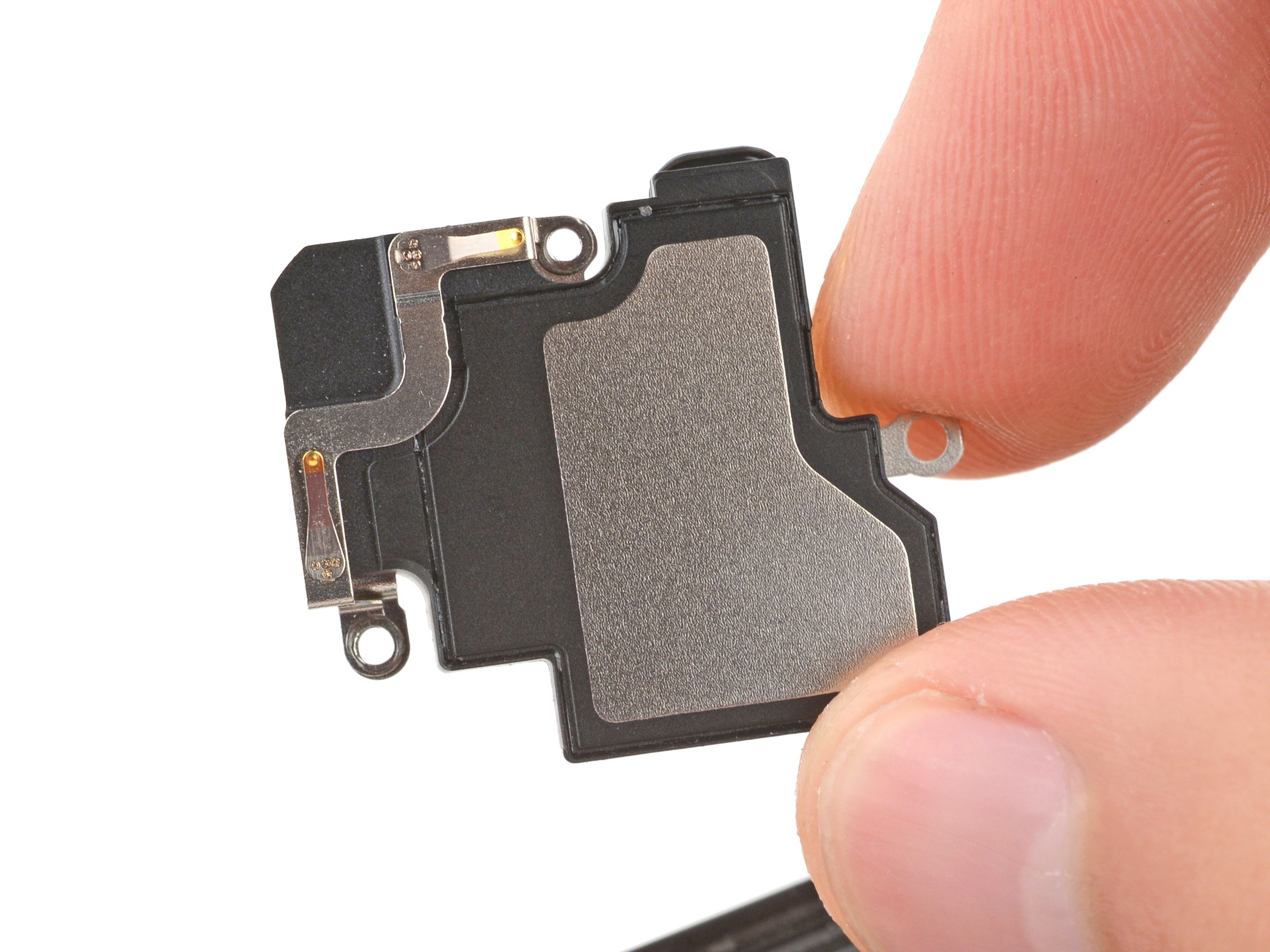iPhone 15 Pro Front Camera Assembly Replacement
Duration: 45 minutes
Steps: 31 Steps
Heads up: Face ID won't work after this repair.
Ready to fix that blurry selfie camera or get Face ID back up and running? If your iPhone 15 Pro's front camera isn’t delivering sharp images, or if Face ID isn't working at all, it's time to swap out the front camera assembly. This part has everything you need, including the front-facing camera and Face ID hardware, all in one neat package. But a heads-up: after replacing this assembly, Face ID won’t be functional unless you’re using iOS 18 or later. In iOS 17.6 and earlier, Face ID can only be restored by Apple or an authorized technician. If you’re tackling this repair yourself and need some extra support, don’t hesitate to schedule a repair!
Step 1
Make sure your phone’s battery dips below 25% before you dive into this repair—lithium-ion batteries can get a little fiery if they’re too full and get damaged.
- Disconnect every cable from your phone—give it a clean getaway.
- Press and hold the power button plus either volume button, and swipe to shut down your phone. Easy does it!
Step 2
Find a nice, clean spot near the bottom edge where your suction cup can hang out and stick without any drama.
- If your screen or back glass is cracked, stick some packing tape over the glass—just enough to cover the cracks. It’ll help keep things together, protect your hands, and make disassembling a lot smoother. Safety first, right?
Step 3
Be careful not to push your opening pick in too deep, or you might accidentally hurt your device. To keep things safe, take a moment to mark your pick and avoid any mishaps.
Feel free to get creative and mark the other corners of your pick with various measurements for extra clarity.
Another fun trick is to attach a coin to your pick about 3 mm from the tip using some tape. It's a nifty way to keep things measured!
- Grab your opening pick and measure about 3mm from the tip. Use a permanent marker to mark the spot – this is where the magic happens!
Step 4
- Grab your trusty P2 pentalobe screwdriver and spin out the two 7 mm screws chilling on each side of the charging port.
Step 5
Keep it cool—don't let the phone get too hot or the battery might throw a fit!
- Grab a hair dryer or heat gun and warm up the bottom edge of the screen until it feels nice and toasty to the touch.
Tools Used
Step 6
- Stick a suction cup to the bottom edge of the screen.
- Give the handle a firm, steady tug to gently separate the screen from the frame.
- Slide the tip of an opening pick into the small gap you've created.
Tools Used
Step 7
Heads up as you slice through the adhesive holding the screen—keep an eye out for these tricky spots so everything goes smoothly!
- Watch out for those delicate cables connecting the screen to your phone! One's just above the action button, and the other hangs out near the middle of the left edge. Treat them with care!
- Keep your eyes peeled for the spring contacts that are scattered around the phone's edge. When you're working in these areas, make sure not to push your pick in too deep – we don't want to bend those little guys!
Step 8
Be careful not to push your opening pick more than 3 mm deep along the bottom edge. A gentle touch goes a long way!
- Gently slide your pick back and forth along the bottom edge to loosen the adhesive. It’s like a little dance to get things moving.
- Leave your pick snugly in the bottom right corner to keep that adhesive from getting too cozy and re-sticking.
Step 9
- Warm up the right edge of your screen until it feels nice and toasty.
Step 10
Keep that pick shallow—don’t go poking in deeper than 5 mm along the right edge.
- Slip your pick around the bottom right corner of the screen and slide it toward the power button. You’ll hit a clip that’s holding the screen in place – don't worry, it's just doing its job!
- Twist the pick so that the flat side is facing under the screen. You’re almost there!
Step 11
- Gently twist the pick to widen the gap between the screen and the frame. Keep going until that right clip decides to let go.
- Slide in a second opening pick right next to the first one. Give it a little wiggle to help it sit snugly.
Step 12
- Gently slide the first pick down to the bottom right corner of the screen.
- Move the second pick up to the top right corner to start loosening that stubborn adhesive.
- Keep these picks in place so the adhesive doesn't sneak back together.
Step 13
- Warm up the top edge of the screen until it feels comfortably hot to the touch.
Step 14
Keep your pick shallow—no more than 3 mm deep along the top edge to avoid any surprises.
- Gently slide your pick around the top right corner and along the top edge to pop loose the two clips and adhesive holding it in place.
Step 15
- Warm up the left edge of the screen until it feels nice and toasty to the touch.
Step 16
Keep your pick away from going deeper than 2 mm along the left edge to steer clear of those sneaky cables that connect the screen to your phone. We want to keep everything in one piece, right?
- Give your pick a spin around the top left corner of the screen.
- Now, slide it down to the bottom left to break that adhesive seal.
Step 17
If the screen is being stubborn, take your opening pick and run it around the edges again to gently loosen any sticky spots still holding on.
- Grab a small box or stack of books and place it next to your phone to give your screen a little lift while you work on its cables.
- Gently swing up the right edge of the screen, just like you're opening a book.
- Prop up the screen so it's nice and steady, giving you easy access to the cables without any strain.
Step 18
- Grab your trusty Y000 screwdriver and unscrew the six screws that are holding the logic board cover in place:
- Four screws, each 1.6mm in length
- Two screws, each 1.3mm in length
Step 19
- Give the bottom of the logic board cover a little counterclockwise twist, then gently slide the top left corner out from under the ambient light sensor cable. Boom—cover removed!
- When you’re putting things back together, don’t forget: tuck that top left corner under the ambient light sensor cable, just like it started.
Step 20
Ready to snap that press connector back in place? Line it up over its socket, then gently push down one side until you hear a click, followed by the other side. Give it a quick check to make sure it's sitting flat—the rubber around the socket can be a bit sneaky and keep things from connecting all the way.
- Gently use the tip of an opening pick to lift and disconnect the battery press connector from the bottom right corner of the logic board.
Step 21
- Gently pop the tip of your opening pick under the screen cable right in the middle of the logic board and lift to disconnect. Easy does it!
Step 22
- Carefully insert the tip of your opening pick beneath the ambient light sensor cable, just to the left at the top corner of the logic board.
- Gently lift the cable to disconnect it.
Step 23
Take care while cleaning the frame to avoid messing up those spring contacts. A little caution goes a long way!
- Time to say goodbye to that screen! Carefully remove it so we can work some magic.
- When you're ready to put everything back together, just follow these steps to add fresh adhesive and get that screen installed like a pro!
Step 24
The third connector is playing hide and seek! Just gently lift the top cable a bit to uncover it. You're doing great!
- Grab your opening pick and gently use the tip to lift up those three rear camera press connectors, located on the top right of the logic board. Once you've got them loose, you're one step closer to success!
Step 25
- Grab your trusty Phillips #000 screwdriver and get ready to remove the three screws holding the rear cameras in place:
- One screw measuring 3.8 mm in length
- One screw measuring 3.2 mm in length
- One screw measuring 2.8 mm in length
Step 26
Try to avoid touching or smudging the camera lenses while you work on this step.
- Slide the tip of a spudger into the top right corner between the rear cameras and the frame.
- Gently pry it up until you can comfortably grip the rear cameras with your fingers.
- Carefully take out the rear cameras.
Tools Used
Step 27
Don't have a standoff screwdriver? No worries! A thin flathead will do the trick. Just make sure to apply steady, downward pressure so you don't accidentally damage the delicate notches in the screw head.
- Grab your Phillips #000 screwdriver and twist out the 2 mm screw holding down the top of the earpiece speaker. It’s a tiny one—don’t let it roll away!
- Swap to your standoff screwdriver and evict the last screw from the bottom left corner of the earpiece speaker. Two screws down, and you’re cruising through this repair!
Step 28
- Take out the earpiece speaker carefully.
- When putting it back, double-check that the gasket in the top right corner of the speaker fits snugly into its spot in the frame.
Step 29
The microphone cable is hanging out, covering the front sensor's press connector—let’s gently move it aside so nothing gets in the way!
- Grab your trusty opening pick and gently nudge that microphone press connector loose from its cozy spot in the top left corner of the logic board.
- Once that's done, give the cable a little lift to clear the way and reveal the two press connectors hanging out at the top edge of the logic board.
Step 30
- Gently slide the tip of your opening pick under the front sensors and front camera press connectors at the top edge of the logic board to lift and disconnect them. Take your time—they're delicate!
Step 31
Watch out for those lenses! Avoid touching or smudging the camera or sensor lenses to keep everything crystal clear.
- Put your iPhone back together by simply reversing these steps.
- Once your repair is done, you might be able to calibrate the new part using Apple's Repair Assistant on iOS 18 and up. Just update your device, go to Settings → General → About → Parts & Service History, tap Restart & Finish Repair, and follow the instructions on screen.
- Remember to recycle your old electronic parts responsibly at an R2 or e-Stewards certified recycler.
- If things didn’t go quite as expected, don’t stress! Try some basic troubleshooting or reach out to our Answers community for support. And if you hit a wall, you can always schedule a repair with us.

















































































